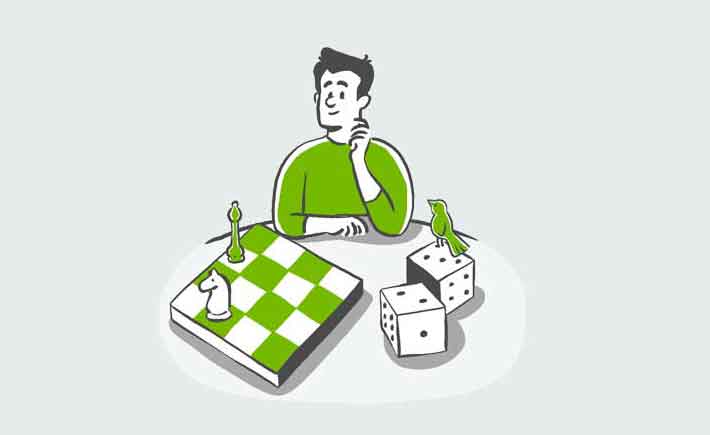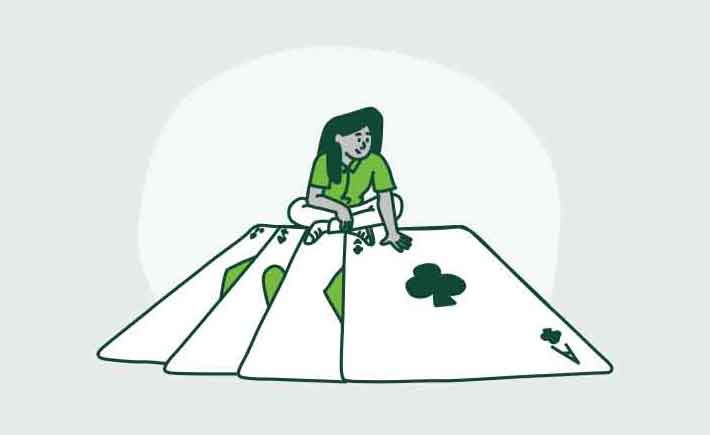In mini-baccarat, cards are dealt face up in front of the dealer in two hands, the “Player” hand and the “Banker” hand. Before she deals, you place a bet on which of two hands, the “Player” or the “Banker,” will end up with a point total closer to nine. Or, you can bet that the two hands will tie.
Card values
The highest possible point total for a hand is nine. Only the rightmost digit is used to determine a hand’s value. For instance, if the Player hand is dealt a 9 and a 3, the point total isn’t 12, it’s 2.
To calculate the point totals of the two hands:
- 10, jack, queen and king = 0
- Ace = 1
- 2 to 9 cards count as their face value.
Third-card rule
If the first two cards of the Player hand total 0 to 5, the Player hand gets a third card. If the Player total is 6 or 7, it does not get a third card.
If the Player hand stood on two cards (i.e., it has a total of 6 or 7), the Banker hand follows the same rules as the Player hand in determining whether it will receive a third card. The Banker receives a card if its total is 0 to 5, and stands on 6 or 7.
If the Player hand takes a third card, these rules apply on the Banker hand:
| If the Banker’s first two cards total: |
The Banker takes a third card if the Player’s third card is: |
|---|
| 0, 1 or 2 |
Any card |
| 3 |
Not an 8 |
| 4 |
2 through 7 |
| 5 |
4 through 7 |
| 6 |
6 or 7 |
Baccarat payouts
If you bet on the Player hand and it wins, you’re paid out at 1 to 1. If you bet $10, you win $10.
If you bet on the Banker hand and it wins, you’re paid out at 1 to 1, minus a 5 percent commission, which the dealer collects. If you bet $10, you net $9.50.
If you bet on a tie, and the hands are identical, you’re paid out at 8 to 1. If you bet $10, you’re paid $80.
House advantage of baccarat
Baccarat is a game of chance. There are no skills you can develop to improve your odds of winning. The house advantage is higher than blackjack, but lower than roulette and poker, as long as you play an optimal strategy. Betting on the Banker hand has the lowest house advantage.
House advantage in mini-baccarat
Banker 1.06%
Player 1.24%
Tie 14.36%
House advantage compared to other games
| Game |
House advantage, with optimal play |
|---|
| Baccarat |
1.06% |
| Blackjack |
0.5% |
| Craps |
0.8% |
| Fortune pai gow poker |
0.5 to 2.5% |
| Poker |
2 to 3.5% |
| Lottery |
50% |
| Roulette |
5.3% |
| Slot machines |
8% (average) |



